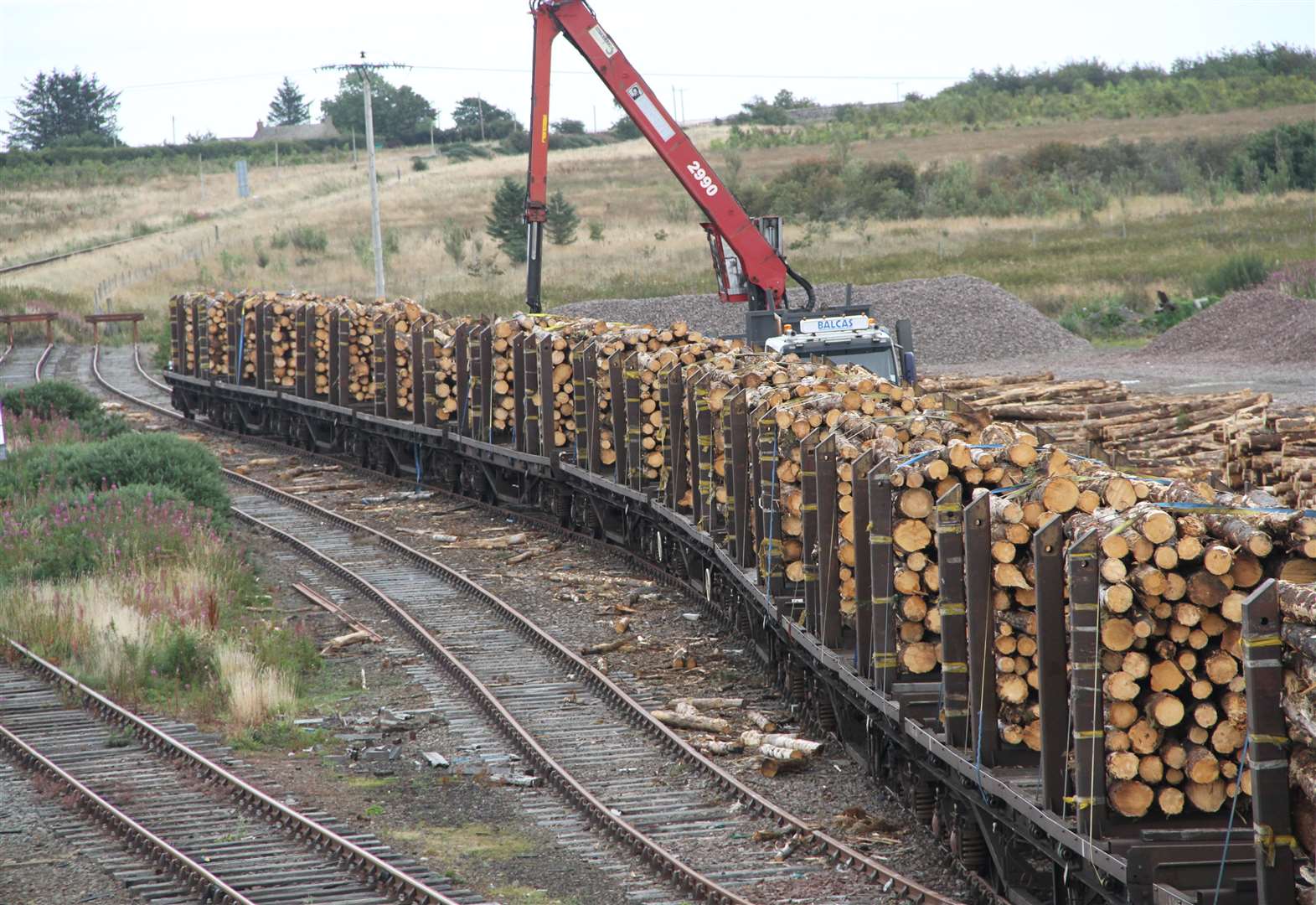Some more positive news for rail freight.

 www.johnogroat-journal.co.uk
www.johnogroat-journal.co.uk

Highland Council approves plan to take 9000 tonnes of timber off Caithness roads and on to rail network
Loading facility at Altnabreac could be model for others across Scotland, states report.
A PLAN to take 9000 tonnes of timber off Caithness roads and on to the rail network has been approved by Highland Council.
It granted planning permission to Caledonia Forest Land Investment Ltd to construct a rail-side timber loading facility on land near Altnabreac station. The company, which has a number of plantations in the north, is working on the venture with HiTrans and Scottish Woodlands.
The facility will be initially operated on a trial basis but, if successful, could be extended and be a model for similar ventures across Scotland, it was stated.
A report which was before councillors said the loading bay will facilitate the haulage of timber by rail from Caithness to Inverness, taking an estimated 400 lorries off the roads. 25 rail trips instead.
"Altnabreac offers one of the best sites in Scotland for rail-side loading and the concept meets the Scottish Government's strategies for moving haulage from road to rail. This follows the successful trial in 2020 funded by Transport Scotland to run a regular timber service from Georgemas Station to Inverness. If this demonstration proves successful it is proposed to extend the facility which will then be subject to a further planning application as appropriate."
The report stated: "Specialist low ground pressure haulage vehicles will transfer the timber from the forest to the facility where it will be stacked adjacent to the rail line and uplifted using a dedicated loader on to specialist rail wagons.
"The loading of timber will take place while the train occupies the rail line and loading times will be timed to suit other rail services and determined by the specialist train provider. At this time, it is anticipated that up to three trains a week will operate within a 24 hour /7 day window."
It added: "For this demonstration project it is proposed that approximately 9000 tonnes of timber will be transferred by rail to Inverness with the exact timing and duration to be determined by the rail provider and the forest owner. The existing route for the site is the unclassified road between Strathmore and Westerdale and then the B870 to Spittal before joining the A9. This route has significant structural issues and moving the timber haulage to rail will bring significant benefits for the Highland Council as roads authority and other road users."
The application was supported by the Highland Timber Transport Group (HTTG) which said:"One of the major problems with timber-by-rail is the cost of road haulage from forest to rail and then rail to mill. Few Scottish mills are currently rail connected so the mill-end road journey cannot usually be eliminated. However, at Altnabreac, the rail-side loading facility is in the heart of a large forest, eliminating the need for public road haulage and utilising in-forest vehicles for transfer to the rail side. Apart from mitigating damage to the road network in Caithness this arrangement provides the best opportunity to establish if the the economics of timber-by-rail can be made viable and sustainable in Scotland."
In a statement before the councillors, HTTG, said: "Over the last 20 years, we have worked with the private sector and a range of supportive public bodies to see if timber-by-rail can be made to work in the Highlands. The Altnabreac Demonstrator Project could prove to be the culmination of this work and has the potential to inform mode transfer to rail opportunities across Scotland. Although the current proposal is limited in scale the strategic significance of what is proposed should not be lost."
